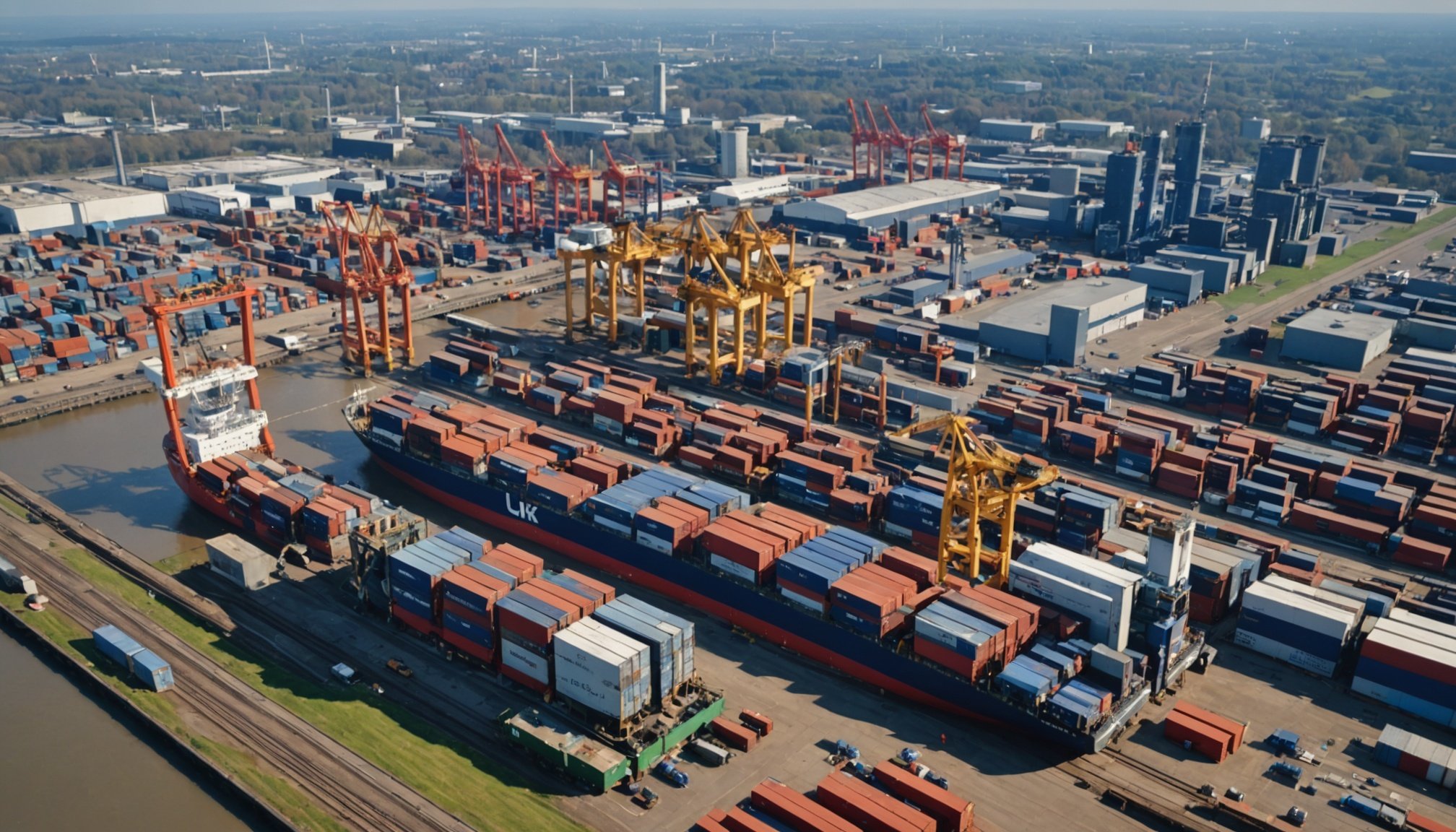How UK Global Market Integration Shapes Domestic Industries
The UK’s global market integration has intensified steadily, reshaping how domestic industries operate. This integration means that UK businesses are increasingly intertwined with international trade, investment flows, and supply chains. As a result, domestic industries face both new opportunities and pressures stemming from global competition and collaboration.
One immediate effect on domestic industry dynamics is the drive toward specialization and innovation. UK firms in sectors like finance, manufacturing, and services often must sharpen their competitive edge to thrive in global markets. This has led to efficiency improvements and adoption of cutting-edge technologies, particularly in industries exposed to international demand. However, some sectors may encounter disruption due to increased import competition or shifting trade policies.
Also read : Discover cutting-edge strategies for boosting small business growth in the uk
The economic impact of global market integration varies across sectors. For example, the finance sector benefits substantially from cross-border transactions, whereas traditional manufacturing industries might suffer from cost pressures and shifts in demand. Greater exposure to global markets also means domestic industries are more vulnerable to international economic fluctuations but gain access to larger consumer bases and foreign investment.
Understanding this nuanced sectoral exposure is crucial to crafting policies that support growth while mitigating risks. As the UK navigates its role in the global economy, fostering resilience in domestic industries becomes a key strategic priority.
Also read : The impact of remote work on the future landscape of uk businesses
Economic Policies and Trade Agreements Influencing UK Market Integration
Understanding UK trade agreements is essential to grasp how economic policy shapes market integration. Post-Brexit, the UK has pursued multiple trade deals independently, aiming to enhance international trade opportunities and support domestic growth. These agreements directly affect sectors such as manufacturing, agriculture, and services by opening new markets and reducing tariffs.
Brexit introduced significant changes in UK’s international market relations. The departure from the EU customs union required the government to establish new trade policies, often prioritizing flexibility and sovereignty. This shift has led to complexities, including border checks and regulatory compliance challenges, impacting supply chains but also encouraging domestic industries to innovate and adapt.
Economic policy has pivoted to foster competitive industries in response to global pressures. Investments in technology, skills training, and infrastructure aim to boost productivity and attract foreign investment. Policies focus on balancing protection of key sectors with embracing free trade. The dynamic between safeguarding local businesses and promoting exports remains a critical component of the UK’s trade strategy.
Through carefully negotiated UK trade agreements and adaptive economic policy, market integration continues to evolve, reflecting the UK’s changing position in the global economy.
Sector-Specific Impacts: Manufacturing, Agriculture, and Services
Understanding how sectoral case studies illuminate the real effects of globalisation on key industries in the UK is crucial. The manufacturing sector UK has faced significant pressure to adapt due to intensifying global competition and evolving supply chains. Companies have shifted production processes, often embracing automation or relocating certain operations abroad to stay competitive. This adaptation highlights the delicate balance between maintaining domestic output and integrating into global trade networks.
In UK agriculture, changes in import and export policies profoundly affect farmers and agribusinesses. Adjustments related to tariffs, subsidies, and market access have forced the sector to reconsider crop choices and production methods. The increased volatility caused by fluctuating trade agreements compels a focus on resilience and diversification to meet both local and international demands.
The UK service industry has undergone transformation as globalisation enables easier cross-border provision of services. Technology and digital platforms expand market reach but also increase competition from international players. This evolution encourages innovation within the service industry, creating new opportunities while challenging traditional service models.
These sectoral developments illustrate how globalisation’s impact is nuanced and requires tailored strategies to capitalize on benefits and mitigate risks in each sector.
Competitiveness, Job Market Effects, and Productivity
The landscape of industry competitiveness in the UK has experienced notable shifts driven by technological advances and global market dynamics. Certain sectors, such as technology and finance, have bolstered their positions, enhancing the UK’s overall competitiveness. Conversely, traditional manufacturing has faced challenges, reflecting in both diminished market share and increased import dependency.
Regarding employment trends in the UK, patterns reveal simultaneous job creation and job displacement within impacted industries. Innovative sectors tend to generate new roles, particularly in tech-driven fields requiring advanced skills. Meanwhile, automation and offshoring contribute to job losses in more routine-heavy industries. This dual trend underscores the importance of targeted workforce reskilling to support transitioning employees.
The interplay between competitiveness and productivity in UK industries is pronounced. Enhanced competitiveness often correlates with productivity growth, fueled by investment in innovation and process improvements. Sectors adapting swiftly to digital transformation show significant gains, while others lag behind due to slower adoption rates. Boosting productivity remains pivotal for sustaining economic growth and safeguarding employment in a competitive UK industrial environment.
Regulatory Challenges and Adjustments
Navigating the evolving landscape of UK industry regulation has become increasingly complex due to changes triggered by shifting international alignments. The post-integration era demands UK businesses to reconcile domestic frameworks with international standards, which often results in compliance challenges. Firms must scrutinize alterations in trade rules, product safety requirements, and environmental regulations to ensure uninterrupted operations.
Regulatory harmonisation, or the lack thereof, stands out as a key difficulty. Where previously UK entities aligned with broader international standards, divergence now requires nuanced understanding and strategic adjustment. This misalignment can create dual compliance burdens for companies operating across borders, raising costs and administrative overhead.
Adapting compliance strategies is crucial. Businesses in critical sectors have begun investing in bespoke regulatory expertise and updating internal protocols to accommodate new rules. Emphasising proactive monitoring of legal developments enables them to anticipate changes rather than respond reactively. This strategic shift reduces risk and supports sustained competitiveness in domestic markets.
Ultimately, the interface between UK industry regulation and international standards continues to evolve, demanding agility and informed action from all involved stakeholders to navigate these compliance challenges effectively.
Analysis of Positive and Negative Consequences
Understanding the globalization impacts UK reveals a nuanced picture. On one hand, globalization drives significant economic benefits UK by boosting high-growth sectors such as technology and services. These industries often expand rapidly due to access to international markets, foreign investments, and talent pools. This expansion creates jobs and enhances competitiveness on a global scale.
However, the domestic industry risks associated with globalization are also prominent. Traditional manufacturing sectors face deindustrialisation pressures as production moves abroad to lower-cost countries. This shift results in job losses and erodes the industrial base, making some local economies vulnerable. Moreover, globalization can introduce market volatility, where sudden global shocks impact UK businesses more directly, complicating economic planning.
In the long term, these consequences shape the UK’s economic resilience and social landscape. A diversified economy focused on innovation may thrive, but regions dependent on declining industries face social challenges, including unemployment and reduced community cohesion. Policymakers must balance encouraging global integration while mitigating risks to domestic sectors to ensure sustainable, inclusive growth.
Expert Commentary and Referenced Perspectives
Insights from academic analysis UK industries provide a robust foundation for understanding market integration’s complexities. Leading economic studies highlight that integration fosters efficiency by enabling resource reallocation, yet also surfaces challenges around regional disparities and competitive adjustments.
Economists emphasize that while integration encourages innovation and productivity growth, its benefits are uneven across sectors. For instance, manufacturing may experience significant gains through streamlined supply chains, whereas service industries face more gradual shifts.
Industry experts reinforce these findings, noting that policy frameworks greatly influence outcomes. Effective regulation and targeted support can mitigate transitional risks, enabling smoother adaptation for businesses. This aligns with economic studies suggesting that market integration’s positive impacts depend on complementary policies addressing workforce skills and infrastructure.
Synthesizing these perspectives reveals a consensus: academic analysis UK industries and expert opinions converge on the notion that strategic engagement is essential. Thought leadership points to a balanced approach, combining openness with safeguards, to maximize integration benefits while managing inherent economic adjustments. This nuanced understanding encourages informed decision-making, guiding stakeholders to optimize both immediate and long-term outcomes in an evolving market landscape.
Advanced Robot Hoovers: Features That Set Them Apart
Understanding the advanced features of robot hoovers can dramatically improve your cleaning experience. Key innovations include smart mapping, adaptive sensors, and multi-surface cleaning capabilities, all designed to deliver thorough results with minimal user intervention.
One standout feature is the use of smart mapping technology. This allows the robot hoover to learn the layout of your home, creating an efficient cleaning path. By avoiding obstacles and remembering room boundaries, it minimizes missed spots and redundant cleaning.
Another critical component is the presence of adaptive sensors. These sensors detect furniture, stairs, and even dirt concentrations. Robot hoovers adjust suction power accordingly, conserving battery while maximizing cleanliness.
Multi-surface cleaning is equally vital. Advanced models automatically switch between carpet, hardwood, and tile, optimizing performance without manual settings adjustment.
To sum up, robot hoovers now combine intelligent navigation, environment awareness, and versatile cleaning to make home maintenance seamless. Exploring these features can help buyers make informed decisions and select a device that suits their cleaning needs while saving time and effort.



